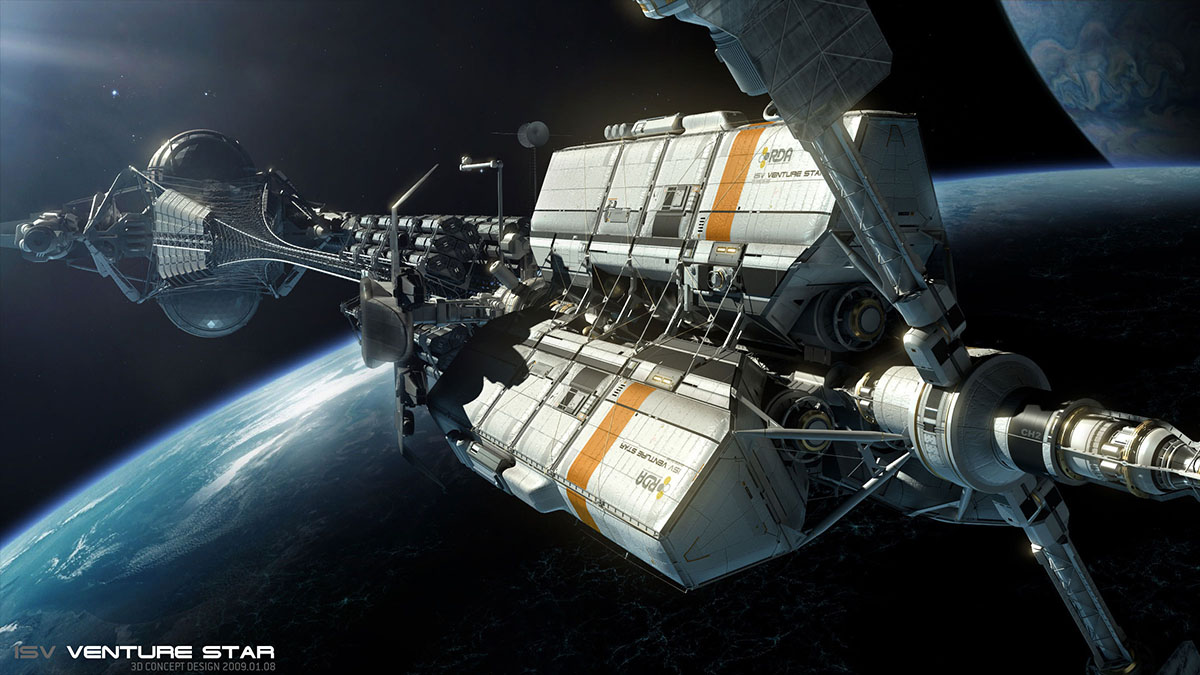when you can’t wait for relativistic rockets

Here’s the recipe for an eye-catching post according to Popular Mechanics. Find a picture of a giant machine designed to be used for the LHC. Browse the arXiv blog for the oddest paper that mentions the collider, then combine the two into a brief write-up about putting relativistic rockets to the test while smashing atoms at nearly the speed of light. But as much as I like to read about ideas for hyperdrives and potential revolutions in space exploration, I’m afraid that I’ve got some bad news about this one. Franklin Felber, the physicist behind the paper in question, is not nearly as close to making relativistic rocketry a reality as the post makes it seem.
You see, Felber’s concept is based on an equation created by mathematician David Hilbert while working on some of the implications of Einstein’s general relativity formulas. This equation predicted that objects traveling at just over half the speed of light should appear to be deflected by a stationary mass to distant observers. So after flipping the idea on its head and adding in a flood of formulas from pretty much every famous theoretical physicist of the last century, Felber came up with a vague concept for what he calls “antigravity propulsion” that would rely on an object traveling at relativistic speeds to accelerate a stationary mass in front of it.
Why exactly could we call something like this an antigravity device? I’m not quite sure, but this is how a press release by his tech R&D shop advertised his work while providing this bizarre description of how a relativistic device built to Felber’s specifications would achieve about 90% of the speed of light…
Accelerating a 1-ton payload to 90 percent of the speed of light requires an energy of at least 30 billion tons of TNT. In the ‘antigravity beam’ of a speeding star, a payload would draw its energy from the antigravity force of the much more massive star. In effect, the payload would be hitching a ride on a star.
Wait, when does a speeding star come into the picture? What speeding star are we talking about? And where would we get a star traveling at relativistic speeds? The smallest possible size of a star is comparable to the diameter of Jupiter. Sending something that big careening at even a small percentage of the speed of light is going to require a black hole. In his latest paper, Felber doesn’t go into any detail as to how we could harness the phenomenon he predicts. Instead, he lays out a blizzard of sophisticated calculus and posits that the LHC could provide a proof of concept test. And if the LHC isn’t available, he’ll settle for Fermilab’s Tevatron.
All right, so his company’s public relations efforts may not be the best and the use of the term antigravity might not be a good choice. But since Felber is trying his best to put his theory to the test in controlled conditions, it might not be such a bad idea to give him a shot. Just because his concept might not work, doesn’t mean we’ll never learn anything from his work. And if it does, we’ll have a new quantum phenomena to study. However, to start calling such a test a stepping stone in hyperdrive propulsion is rather sloppy science journalism since a relativistic particle moving a stationary one doesn’t say much about what would happen when the masses are scaled up to the size of spacecraft and how the phenomena can be used in a practical way.
Spaceships designed to carry humans to alien worlds and solar systems would be very large and heavy. How big would the repulsive mass need to be? And how would we accelerate it to over 0.577c without expending a totally unrealistic amount of energy in the process? Not even full scale antimatter engines would be up to the task and hypothetical warp drive technologies would be more of a risky alternative than an enabler.
See: Felber, F. (2009). Test of relativistic gravity for propulsion at the Large Hadron Collider SPESIF 2010, the Space, Propulsion and Energy Sciences International Forum arXiv: 0910.1084v1
[ illustration by CG artist Luke Paxton ]





